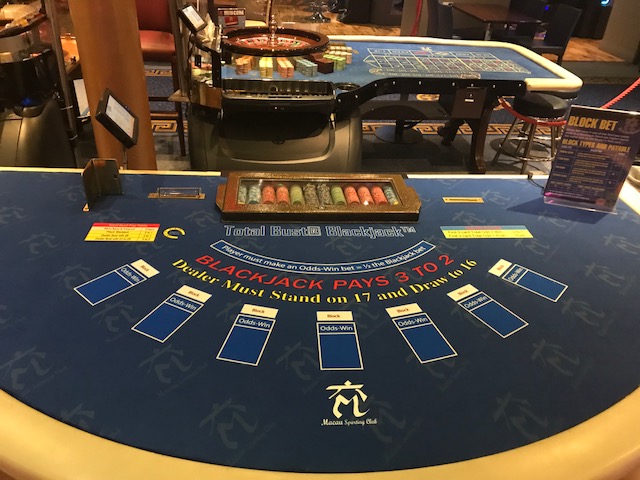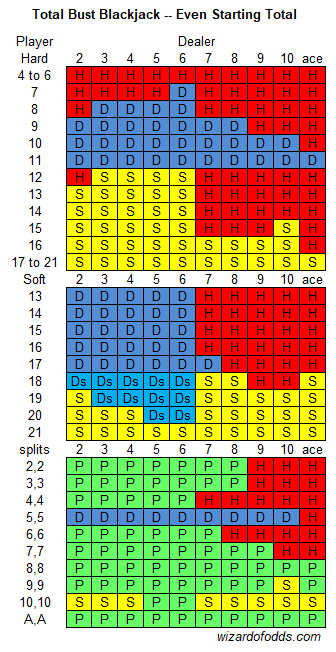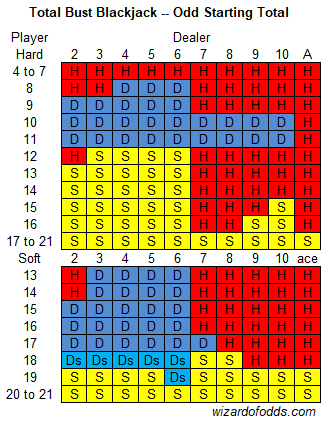On this page
Total Bust Blackjack
Introduction
Total Bust Blackjack is a blackjack variant that pays a premium of the dealer busts with 23 or more points. It pays for this by mandating a side bet that wins if the player has a starting hand consisting of an odd number of points, that ends up winning. The first known placement I'm aware of was at the Macau Entertainment Complex in Cork, Ireland.
Rules
Following are the permanent rules for Total Bust Blackjack.
- Game is played with four to eight standard 52-card decks.
- Player must bet exactly half his blackjack wager on the Odds Win side bet.
- Player may double on any first two cards.
- Player may double after a split.
- Player may re-split any pair up to four hands, including aces.
- The player’s blackjack wager and any supplemental wagers made doubling or splitting shall pay as follows:
- Blackjack: Pays 2 to 1 (including against a dealer blackjack)
- Dealer total of 26: 2 to 1
- Dealer total of 23 to 25: 3 to 2
- All other wins: 1 to 1
- The player’s Odds Win wager shall pay as follows:
- Blackjack: Pays 2 to 1 (including against a dealer blackjack)
- Odd initial total and player wins: 2 to 1
- Odd initial total and player ties: Push
- Odd initial total and dealer wins: Loss
- Even initial total: Loss
- If the player doubles on an odd total, he does not double the Odds Win bet. If the player has a pair, it must be an even total, which is a loss for the Odds Win bet, thus the question of splitting the Odds Win bet is moot, because it would have already lost.
Following are the configurable rules.
- Number of decks, but four to eight are recommended
- Dealer may or may not take a hole card. If the dealer takes a hole card, he would peek for blackjack before the first player's turn.
- Dealer may hit or stand on a a soft 17.
Strategy
The strategy depends on whether the player starts with an odd or even total. The following table is for even starting hands and the following one for odd starting hands. Both assume the dealer stands on soft 17 and peeks for a blackjack.
Analysis
According to the combinatorial analysis of Charles Mousseau, the mathematician of record for the game, the house edge assuming eight decks, dealer stands on soft 17, dealer peeks for blackjack, and re-splitting capped to four hands, is 1.37% relative to the blackjack wager only. The ratio of the expected player loss to the total initial bet, including the Odds Win bet, is 2/3 of that, or 0.91%.
My own infinite-deck analysis agrees to Charles' bottom line within 0.1%.
Interestingly, I show the increase in house edge if the dealer hits a soft 17 to be almost negligible at 0.01%.
Acknowledgements
I would like to thank the following people:
- Stephen Au Young, the game owner, for sharing the math report on the game and his patience with my questions on the rules.
- Charles Mousseau, the mathematician of record, for helping me isolate some differences in the first draft of my analysis of the game.






